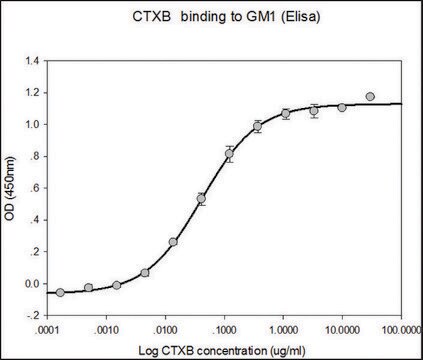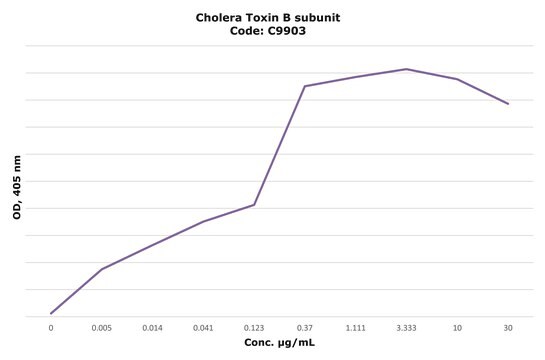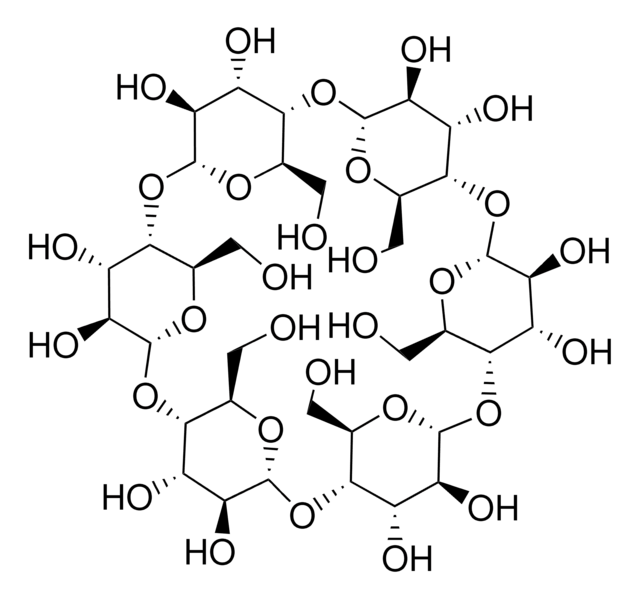C6499
CTB
≥98% (HPLC)
Synonym(s):
CTPB, N-(4-Chloro-3-trifluoromethyl-phenyl)-2-ethoxy-benzamide
Sign Into View Organizational & Contract Pricing
All Photos(1)
About This Item
Empirical Formula (Hill Notation):
C16H13ClF3NO2
CAS Number:
Molecular Weight:
343.73
UNSPSC Code:
12352200
NACRES:
NA.77
Recommended Products
Assay
≥98% (HPLC)
form
powder
color
white to off-white
solubility
DMSO: >10 mg/mL
storage temp.
2-8°C
General description
CTB (N-(4-Chloro-3-trifluoromethyl-phenyl)-2-ethoxy-benzamide) is derived from anacardic acid.
Application
CTB has been used to study its apoptotic effects on P53 protein acetylation.
Biochem/physiol Actions
CTPB was a first known small molecular activator of histone acetyltransferase p300. CTB is a simplified analog of CTPB with comparable or higher activity. The compound activates the histone acetyltransferase (HAT) activity of p300/EP300/E1A binding protein.
Small molecule activators of HAT such as CTB (N-(4-Chloro-3-trifluoromethyl-phenyl)-2-ethoxy-benzamide) is useful for altering chromatin acetylation directly. It might serve as a therapeutic agent for treating the complications of cognitive dysfunction including neuropsychiatric, neurodevelopmental and neurodegenerative diseases.
Features and Benefits
This compound is a featured product for Gene Regulation research. Click here to discover more featured Gene Regulation products. Learn more about bioactive small molecules for other areas of research at sigma.com/discover-bsm.
Storage Class Code
11 - Combustible Solids
WGK
WGK 2
Certificates of Analysis (COA)
Search for Certificates of Analysis (COA) by entering the products Lot/Batch Number. Lot and Batch Numbers can be found on a product’s label following the words ‘Lot’ or ‘Batch’.
Already Own This Product?
Find documentation for the products that you have recently purchased in the Document Library.
Zhe Yang et al.
PloS one, 11(12), e0168037-e0168037 (2016-12-10)
To investigate the influence of immunization routes onIgG, IgA and IgM production in systemic and mucosal compartments, we immunized mice with keyhole limpet hemocyanin (KLH) via oral, intranasal (i.n.) or subcutaneous (s.c.) routes alone or combined with the intravenous (i.v.)
Dan Zheng et al.
Vaccine, 34(51), 6464-6471 (2016-11-22)
The long alpha-helix (LAH) region located in influenza virus hemagglutinin (HA) shows conservation among different influenza A strains, which could be used as a candidate target of influenza vaccines. Moreover, the hepatitis B virus core protein (HBc) is a carrier
Willian S Korim et al.
Cardiovascular research, 115(6), 1092-1101 (2018-10-26)
Neuroinflammation is a common feature in renovascular, obesity-related, and angiotensin II mediated hypertension. There is evidence that increased release of the pro-inflammatory cytokine tumour necrosis factor-α (TNF-α) contributes to the development of the hypertension, but the underlying neural mechanisms are
2009 IEEE 3rd International Conference on Nano/Molecular Medicine and Engineering, 2 (2013)
Cory Chew et al.
Neurorehabilitation and neural repair, 33(8), 656-667 (2019-07-10)
Background. Motoneuron loss is a severe medical problem that can result in loss of motor control and eventually death. We have previously demonstrated that partial motoneuron loss can result in dendritic atrophy and functional deficits in nearby surviving motoneurons, and
Articles
Epigenetic modifications are thought to occur through two key interconnected processes—DNA methylation and the covalent modification of histones.
Our team of scientists has experience in all areas of research including Life Science, Material Science, Chemical Synthesis, Chromatography, Analytical and many others.
Contact Technical Service







